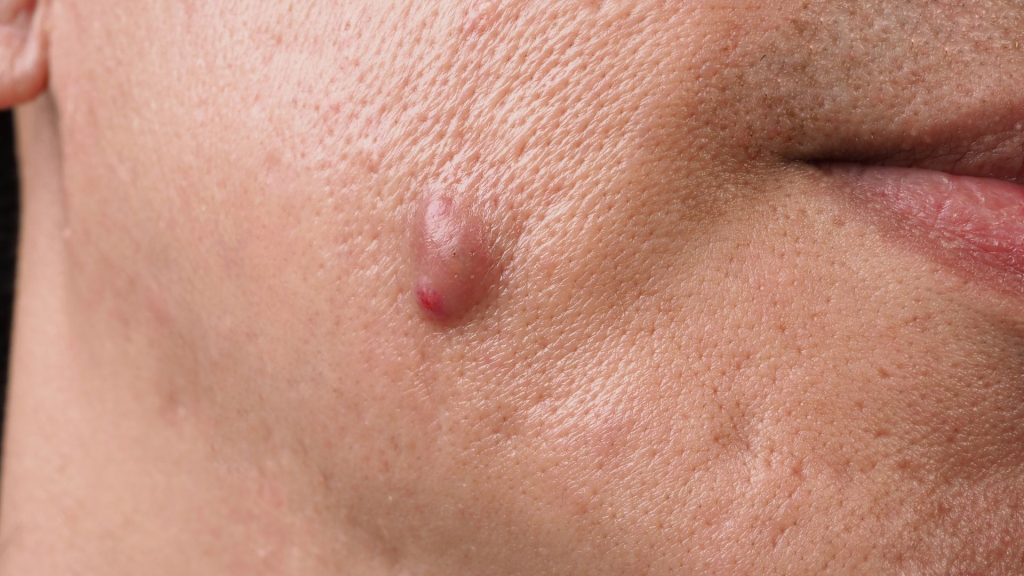When you’re living with Hidradenitis Suppurativa – a chronic skin condition characterized by recurrent, painful abscesses – effective wound care is crucial. The relief from the discomfort and pain of Hidradenitis Suppurativa typically comes when the abscess has drained, but managing the process before, during, and after can be challenging. Here are four essential HS wound care tips to help you navigate this process more comfortably and effectively.
HS Wound Care Tips
1. HS Wound Care for Draining Abscesses or Ready to Drain
When an abscess is close to draining or ready to drain, applying continuous moist warm/hot compresses or packs can be very helpful. But this HS wound care routine is worth it. The warmth helps increase blood flow to the area, speeding up the body’s natural healing processes. Your goal is to get the abscess as soft as possible so it can begin to drain easily.
Use a clean cloth soaked in warm water or a commercially available heat pack. Apply it to the affected area for about 15 minutes several times a day. Be careful to avoid burning your skin; the pack should be warm, not hot. Also, avoid heat if your abscesses or bumps are not ready to drain, as it can cause inflammation.
2. Care for Abscesses Not Ready to Drain
If you have an abscess that isn’t ready to drain, your approach should be different. Instead of heat, use ice packs to help reduce inflammation and numb the area, providing some pain relief. You can also take over-the-counter pain relievers, following the dosage instructions on the package. Remember to place a towel, washcloth, or a similar barrier between the abscesses and the ice pack.
It’s also crucial not to irritate an abscess that’s deep under the skin. Avoid squeezing, scratching, or otherwise disturbing it, as this can potentially cause further inflammation or even lead to an infection. Just leave the abscess. The more you irritate it, the more painful it’s likely to get. If it’s already painful, you can get an ice pack or take pain relievers (consult your physician before taking any medication).
3. Caring for Oozing Abscesses & Healing Open HS Wound

Once an abscess begins to drain, it’s important to keep the area clean to prevent infection. Gently wash the area with mild soap and warm water, then pat dry. A common mistake that HS patients make is to press the abscesses too much, which keeps the wound open and irritated. Just keep your HS wound care routine gentle and simple.
You can apply a non-stick dressing to absorb any ongoing drainage and protect the wound from further irritation. Change the dressing regularly, especially if it becomes wet or dirty. Avoid Band-Aids that trap a lot of moisture – this can harbor bad bacteria.
As the wound starts healing, keep it clean and protected. Another HS wound care tip is to avoid picking any scabs that form, which can delay the healing process and increase the risk of scarring.
4. Choose clothing Carefully
When dealing with HS wound care, the type of clothing you choose can make a significant difference in your comfort and the healing process. Here are some clothing tips that can help. Choose breathable fabrics. Wear clothes made from natural, breathable fabrics like cotton or bamboo. These materials allow air to circulate around the wound, promoting healing and reducing the risk of infection. Avoid synthetic materials like polyester, which can trap heat and moisture, potentially exacerbating the condition.
Tight clothing can rub against wounds, causing irritation and potentially slowing down the healing process. Loose-fitting clothes are preferable as they reduce friction and pressure on the affected areas. So choose loose clothing.
5. Hidradenitis Suppurativa Scar Care
Scarring is a common after-effect of Hidradenitis Suppurativa, particularly for recurring abscesses. While you can’t completely prevent scars, you can help minimize their appearance.
Once the wound has fully healed, you can begin scar care. This might include massaging the area gently with a moisturizer or using silicone sheets or gels, which can help soften and flatten scars. Additionally, protecting the area from sun exposure can prevent the darkening of the scar. Always use a broad-spectrum sunscreen with an SPF of 30 or higher when going outside.
Remember, everyone’s experience with Hidradenitis Suppurativa is unique, and what works for one person may not work for another. Always consult with your healthcare provider before starting any new treatment plan. They can provide personalized advice about HS wound care based on your specific symptoms and overall health.
